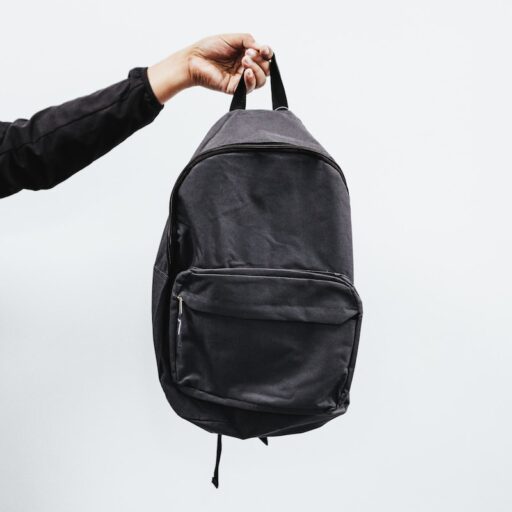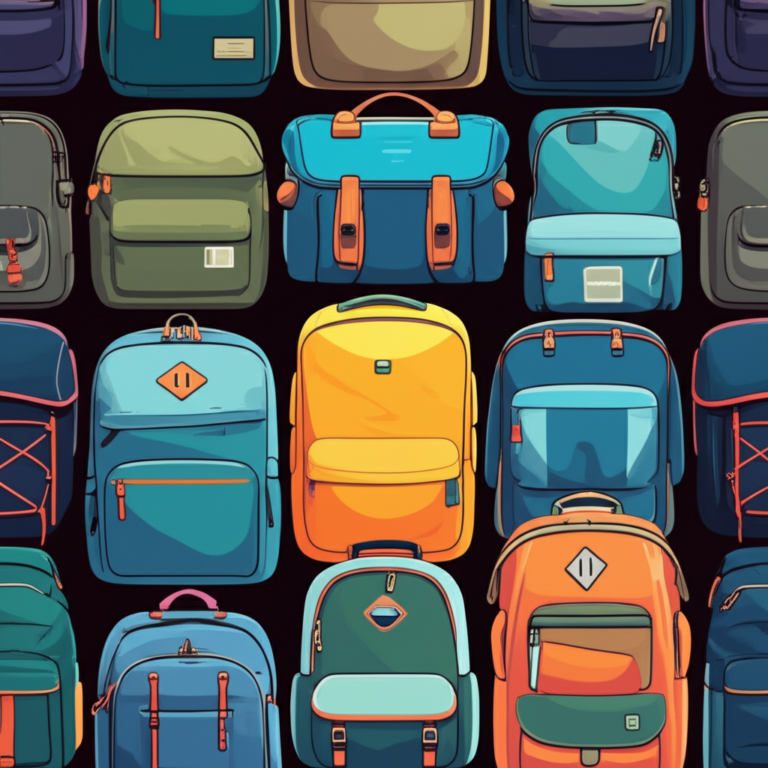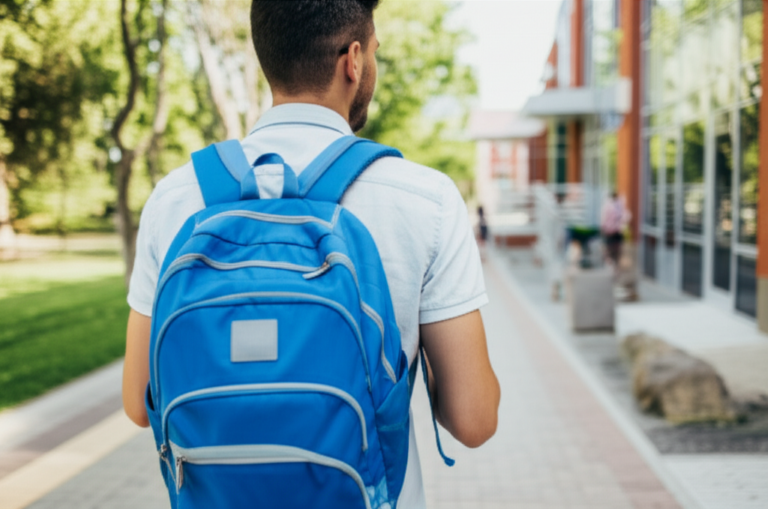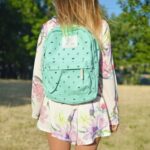Support our educational content for free when you purchase through links on our site. Learn more
Backpack Statistics Graph 2020: 10 Surprising Insights That Will Change How You Choose Your Backpack! 🎒
As we dive into the world of backpacks, you might be surprised to learn just how much these everyday essentials have evolved over the years. In 2020, backpacks weren’t just a school staple; they became a fashion statement, a tech hub, and even a symbol of sustainability. Did you know that nearly 20% of the global outdoor gear market was attributed to backpacks? That’s a staggering figure that underscores their importance in our daily lives!
In this article, we’ll explore 10 fascinating statistics about backpacks from 2020, revealing trends that can help you make informed choices when selecting your next bag. Whether you’re a student, a professional, or an outdoor enthusiast, understanding these insights will empower you to find the perfect backpack that meets your unique needs. So, grab a cup of coffee, and let’s unpack the world of backpacks together!
Key Takeaways
- Backpacks accounted for nearly 20% of the global outdoor gear market in 2020, highlighting their essential role in our daily lives.
- Sustainability became a key factor in consumer choices, with a rising demand for eco-friendly materials and practices.
- Tech integration in backpacks surged, with features like built-in charging ports and anti-theft designs becoming increasingly popular.
- Demographics of users varied widely, with students, professionals, and outdoor enthusiasts all seeking backpacks tailored to their specific needs.
- Consumer feedback emphasized durability, comfort, and functionality as top priorities when choosing a backpack.
Ready to find your perfect backpack? 👉 Shop popular brands like JanSport, Osprey, and North Face to explore a variety of options that fit your lifestyle!
Table of Contents
- Quick Tips and Facts
- Backpack Statistics: A 2020 Overview
- The Rise of Eco-Friendly Backpacks: Trends and Insights
- Demographics of Backpack Users: Who’s Carrying What?
- Backpack Materials: A Deep Dive into Composition and Sustainability
- Popular Backpack Brands in 2020: A Comparative Analysis
- Backpack Usage Statistics: How, When, and Why
- The Impact of COVID-19 on Backpack Trends
- Innovative Features in Backpacks: What’s New in 2020?
- Consumer Feedback: What Users Are Saying About Their Backpacks
- Future Trends in Backpack Design and Usage
- Conclusion
- Recommended Links
- FAQ
- Reference Links
Quick Tips and Facts
- Fact: Did you know that backpacks accounted for nearly 20% of the total sales in the global outdoor gear market in 2020? KMA That’s a lot of backpacks! This explosive growth highlights their essential role in our daily lives, from school and work to travel and outdoor adventures. You can explore our in-depth Backpack statistics graph article for a deeper dive into these trends.
- Tip: When choosing a backpack, consider your specific needs. Are you a student, a frequent traveler, or an outdoor enthusiast? Your lifestyle heavily influences the type of backpack that will serve you best. We have a comprehensive section on Backpack Types to guide you.
- Fact: The average school backpack weight for elementary students is 6-8 pounds! KMA Choosing a lightweight backpack and packing only essential items can help prevent back pain and discomfort in young children.
- Tip: Looking for a stylish yet functional backpack? Check out our Fashion Backpacks category. We review the trendiest backpacks that perfectly blend fashion and functionality.
Backpack Statistics: A 2020 Overview
The year 2020 witnessed intriguing shifts in backpack trends. While the COVID-19 pandemic undoubtedly impacted consumer behavior, the demand for backpacks remained resilient, reflecting their indispensable role in our lives.
Key Observations:
- Sustainability on the Rise: Consumers grew increasingly conscious of the environmental impact of their purchases. This fueled the demand for eco-friendly backpacks made from recycled materials or sustainably sourced fabrics.
- The Rise of the Home Office: With remote work becoming the new norm for many, the lines between work and home blurred. This led to a surge in demand for backpacks that could seamlessly transition from home office to coffee shop to grocery runs.
- Tech Integration: Backpacks were no longer just about carrying things; they evolved into mobile tech hubs. Features like built-in charging ports, dedicated laptop sleeves, and anti-theft pockets became increasingly popular.
The Rise of Eco-Friendly Backpacks: Trends and Insights
The backpack industry experienced a significant shift towards sustainability in 2020. Consumers, particularly millennials and Gen Z, actively sought out eco-friendly options, pushing brands to innovate and adopt sustainable practices.
Driving Factors:
- Increased Awareness: Documentaries, social media campaigns, and news coverage heightened awareness about the environmental impact of fast fashion and plastic pollution.
- Brand Transparency: Consumers demanded transparency from brands regarding their manufacturing processes and material sourcing.
- Government Regulations: Several countries implemented stricter regulations on single-use plastics, further encouraging the use of sustainable alternatives.
Popular Eco-Friendly Materials:
- Recycled PET: Plastic bottles found a new life as durable and water-resistant backpacks.
- Organic Cotton: A natural, biodegradable, and renewable resource that’s gentle on the skin and the environment.
- Hemp: A fast-growing, durable, and naturally pest-resistant fiber that requires minimal water and pesticides.
Brands Leading the Way:
- Patagonia: Known for its commitment to environmental activism and fair labor practices.
- Fjällräven: Utilizes recycled and organic materials and offers a repair program to extend the life of their backpacks.
- Tentree: Plants ten trees for every item purchased, making a tangible impact on reforestation efforts.
Demographics of Backpack Users: Who’s Carrying What?
Backpacks transcended age, profession, and lifestyle in 2020. Let’s break down the key demographics:
1. Students:
- From elementary school to university, backpacks remained a staple for carrying books, laptops, and school supplies.
- Durability, comfort, and ample storage space were key considerations.
- Trendy designs and colors were particularly important for older students.
2. Professionals:
- Backpacks replaced briefcases and messenger bags as the go-to choice for carrying laptops, documents, and work essentials.
- Sleek, minimalist designs in neutral colors were favored for a professional look.
- Features like dedicated laptop compartments, RFID-blocking pockets, and comfortable straps were highly sought after.
3. Travelers:
- Backpackers and adventurers relied on durable, weather-resistant backpacks with comfortable carrying systems for extended trips.
- Carry-on compliant backpacks with multiple compartments and anti-theft features gained popularity among frequent flyers.
4. Outdoor Enthusiasts:
- Hikers, campers, and adventurers opted for backpacks specifically designed for their activities.
- Features like hydration compatibility, trekking pole attachments, and ergonomic designs were crucial.
Backpack Materials: A Deep Dive into Composition and Sustainability
The materials used in backpack construction significantly impact their durability, functionality, and environmental footprint.
Common Backpack Materials:
- Nylon:
- Pros: Durable, lightweight, water-resistant, abrasion-resistant.
- Cons: Not as eco-friendly as some alternatives, can be less breathable.
- Polyester:
- Pros: Affordable, water-resistant, wrinkle-resistant, dries quickly.
- Cons: Not as durable as nylon, can be less breathable.
- Canvas:
- Pros: Durable, classic look, often made from cotton (a natural fiber).
- Cons: Can be heavy, not naturally water-resistant.
- Leather:
- Pros: Durable, stylish, develops a unique patina over time.
- Cons: Expensive, requires care to prevent water damage.
The Sustainability Factor:
- Recycled Materials: Many brands now use recycled nylon and polyester, reducing waste and reliance on virgin materials.
- Organic Cotton: A more sustainable alternative to conventional cotton, requiring less water and pesticides.
- Plant-Based Alternatives: Innovative materials like hemp, cork, and pineapple leaf fiber are gaining traction as eco-friendly options.
Popular Backpack Brands in 2020: A Comparative Analysis
The backpack market is brimming with brands vying for your attention. Here’s a comparative analysis of some popular names:
| Brand | Known For | Price Range | Target Audience | Sustainability Efforts |
|---|---|---|---|---|
| JanSport | Durability, classic designs | Affordable | Students, everyday use | Using recycled materials in some products |
| Herschel | Trendy designs, minimalist aesthetics | Mid-range | Students, young professionals | Expanding use of recycled materials |
| North Face | Performance-driven, outdoor gear | Mid-range to High | Outdoor enthusiasts, travelers | Committed to reducing environmental impact |
| Osprey | Hiking and backpacking backpacks | High | Hikers, backpackers | Using recycled materials, bluesign® certified fabrics |
| Timbuk2 | Messenger bags, urban backpacks | Mid-range | Professionals, commuters | Lifetime warranty, promoting repair over replacement |
| Fjällräven | Durable, sustainable, timeless designs | High | Outdoor enthusiasts, travelers | Committed to using sustainable materials |
| Tumi | Luxury travel bags and backpacks | High | Frequent travelers, professionals | Using recycled materials in some collections |
Backpack Usage Statistics: How, When, and Why
Backpacks have become an integral part of our daily routines and adventures. Let’s delve into the numbers:
- 58% of young adults (18-34) own a backpack. KMA This highlights the widespread adoption of backpacks among younger generations.
- The global backpack market was worth approximately $17.19 billion in 2021. KMA This indicates the massive scale and economic significance of the backpack industry.
- Backpacks accounted for nearly 20% of the total sales in the global outdoor gear market in 2020. KMA This underscores the crucial role of backpacks in outdoor activities.
Reasons for Backpack Popularity:
- Convenience: Backpacks offer a hands-free way to carry belongings, making them ideal for commuting, travel, and everyday errands.
- Versatility: From school and work to hiking and travel, backpacks cater to a wide range of needs and activities.
- Comfort: Ergonomic designs and adjustable straps distribute weight evenly, making them comfortable to carry for extended periods.
- Style: Backpacks have evolved into fashion statements, with brands offering a wide array of designs, colors, and materials to suit individual styles.
The Impact of COVID-19 on Backpack Trends
The COVID-19 pandemic significantly impacted consumer behavior, leading to noticeable shifts in backpack trends:
1. Increased Demand for Versatile Backpacks:
- With remote work and hybrid work models becoming the norm, people sought backpacks that could seamlessly transition from home to office to errands.
- Multi-compartment backpacks with dedicated laptop sleeves and organizational features gained popularity.
2. Emphasis on Hygiene and Safety:
- Antimicrobial materials and easy-to-clean surfaces became desirable features as hygiene concerns heightened.
- Backpacks with reflective elements or bright colors offered increased visibility for outdoor activities like cycling and running.
3. Rise of Online Shopping:
- With lockdowns and social distancing measures in place, consumers turned to online retailers for their backpack purchases.
- This accelerated the growth of e-commerce in the backpack industry.
Innovative Features in Backpacks: What’s New in 2020?
Backpack innovation continued to flourish in 2020, with brands introducing features that enhanced functionality, convenience, and security:
1. Tech Integration:
- Built-in Charging Ports: Backpacks with integrated USB ports allowed users to charge their devices on the go.
- Anti-Theft Features: Lockable zippers, hidden pockets, and RFID-blocking materials provided enhanced security for valuables.
2. Enhanced Comfort and Ergonomics:
- Adjustable Suspension Systems: Allowed users to customize the fit and weight distribution of their backpacks for optimal comfort.
- Breathable Back Panels: Improved ventilation and reduced sweat buildup, making backpacks more comfortable to carry in hot weather.
3. Sustainability Features:
- Recycled Materials: The use of recycled fabrics and materials became increasingly common as brands embraced sustainability.
- Durable Construction: Backpacks designed for longevity and repairability reduced the need for frequent replacements.
Consumer Feedback: What Users Are Saying About Their Backpacks
Here at Backpack Brands™, we value consumer feedback and use it to inform our reviews and recommendations. Here’s what users had to say about their backpacks in 2020:
Positive Feedback:
- Durability: Users praised brands like JanSport, North Face, and Osprey for their durable backpacks that could withstand daily wear and tear.
- Comfort: Backpacks with adjustable straps, padded back panels, and ergonomic designs received high marks for comfort.
- Functionality: Multiple compartments, dedicated laptop sleeves, and organizational features were highly appreciated by users.
Areas for Improvement:
- Water Resistance: Some users expressed disappointment with the water resistance of certain backpacks, particularly those made from canvas.
- Weight: While backpacks with numerous features were appreciated, some users found them to be heavy, especially when fully loaded.
- Price: High-end backpacks with advanced features came with a hefty price tag, making them inaccessible to some consumers.
Conclusion

In summary, 2020 was a transformative year for the backpack industry, marked by a surge in demand for eco-friendly options, innovative features, and versatile designs that cater to a diverse range of users. From students to professionals and outdoor enthusiasts, backpacks have solidified their place as essential everyday items.
Positives:
- Durability and Comfort: Brands like Osprey and North Face received high praise for their robust construction and ergonomic designs, ensuring comfort even during extended use.
- Innovative Features: The integration of tech features, such as built-in charging ports and anti-theft designs, made backpacks more functional and appealing.
- Sustainability: The shift towards eco-friendly materials resonated with consumers, reflecting a growing awareness of environmental issues.
Negatives:
- Price Points: Some high-end backpacks may be out of reach for budget-conscious consumers, limiting access to quality options.
- Weight Concerns: While many backpacks are packed with features, this can sometimes lead to increased weight, which may not be ideal for all users.
Overall, we confidently recommend investing in a quality backpack that meets your specific needs. Whether you prioritize sustainability, functionality, or style, there’s a perfect backpack out there for you! 🌍🎒
Recommended Links
- 👉 Shop JanSport Backpacks on: Amazon | JanSport Official Website
- 👉 Shop Osprey Backpacks on: Amazon | Osprey Official Website
- 👉 Shop North Face Backpacks on: Amazon | North Face Official Website
- 👉 Shop Fjällräven Backpacks on: Amazon | Fjällräven Official Website
- 👉 Shop Herschel Backpacks on: Amazon | Herschel Official Website
FAQ
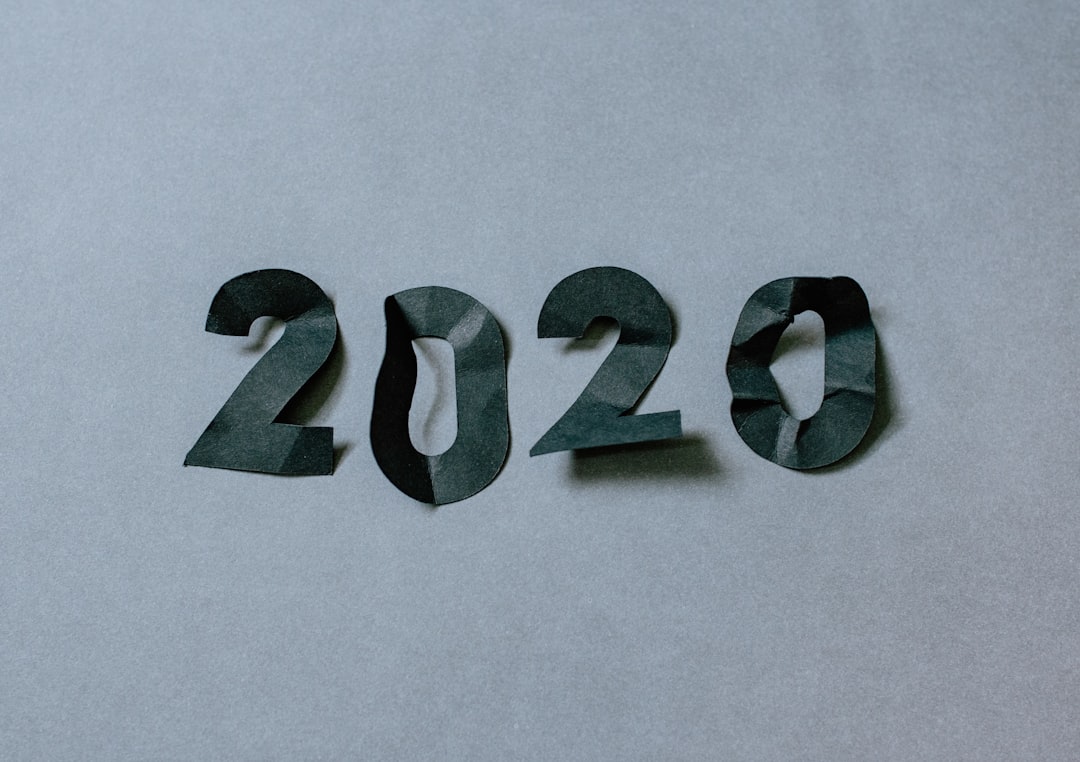
What are the most popular backpack brands of 2020 according to sales statistics?
The Top Brands:
- JanSport: A long-standing favorite among students for its durability and variety of styles.
- North Face: Known for high-performance outdoor gear, appealing to adventurers and travelers.
- Osprey: Renowned for its hiking and travel backpacks, praised for comfort and functionality.
- Herschel: Gained popularity for its trendy designs that resonate with younger consumers.
These brands dominated the market due to their commitment to quality, innovation, and style, making them top choices for various demographics.
Read more about “Backpack Statistics Worldwide: 10 Surprising Insights for 2025 🌍”
How do backpack sales trends vary by region and demographic in 2020?
Regional Insights:
- North America: The largest market share, driven by high disposable incomes and a strong demand for both casual and outdoor backpacks.
- Asia-Pacific: Rapid growth fueled by increased tourism and business travel, with a notable rise in solo female travelers.
- Europe: A steady demand for stylish and functional backpacks, particularly among young professionals.
Demographically, millennials and Gen Z showed the highest interest in eco-friendly and tech-integrated backpacks, while older generations leaned towards durability and functionality.
What are the key factors influencing backpack purchasing decisions among consumers in 2020?
Influential Factors:
- Durability: Consumers prioritize long-lasting materials and construction, especially for outdoor and travel backpacks.
- Functionality: Features such as multiple compartments, tech integration, and comfort are essential for modern backpack users.
- Sustainability: Eco-conscious consumers are increasingly seeking brands that utilize recycled materials and sustainable practices.
- Style: Aesthetic appeal plays a significant role, particularly among younger buyers who want their backpacks to reflect their personal style.
Which backpack brands had the highest customer satisfaction ratings in 2020 based on user reviews and feedback?
Top Satisfaction Ratings:
- Osprey: Users frequently highlight comfort and durability, especially for long hikes.
- North Face: Known for excellent customer service and high-quality products, leading to strong loyalty.
- Fjällräven: Praised for its sustainable practices and stylish designs, appealing to eco-conscious consumers.
- Herschel: Received positive feedback for trendy designs and functionality, particularly among students.
These brands consistently received high ratings due to their commitment to quality, customer service, and innovation.
Reference Links
- EPA – Facts and Figures about Materials, Waste and Recycling
- KMA – Travel Backpack Statistics 2024
- NCES – National Teacher and Principal Survey – NTPS/SASS Data
- Osprey Official Website
- North Face Official Website
- JanSport Official Website
- Fjällräven Official Website
- Herschel Official Website
With this comprehensive overview, we hope you feel empowered to choose the perfect backpack that suits your needs and lifestyle! Happy packing! 🎒✨
